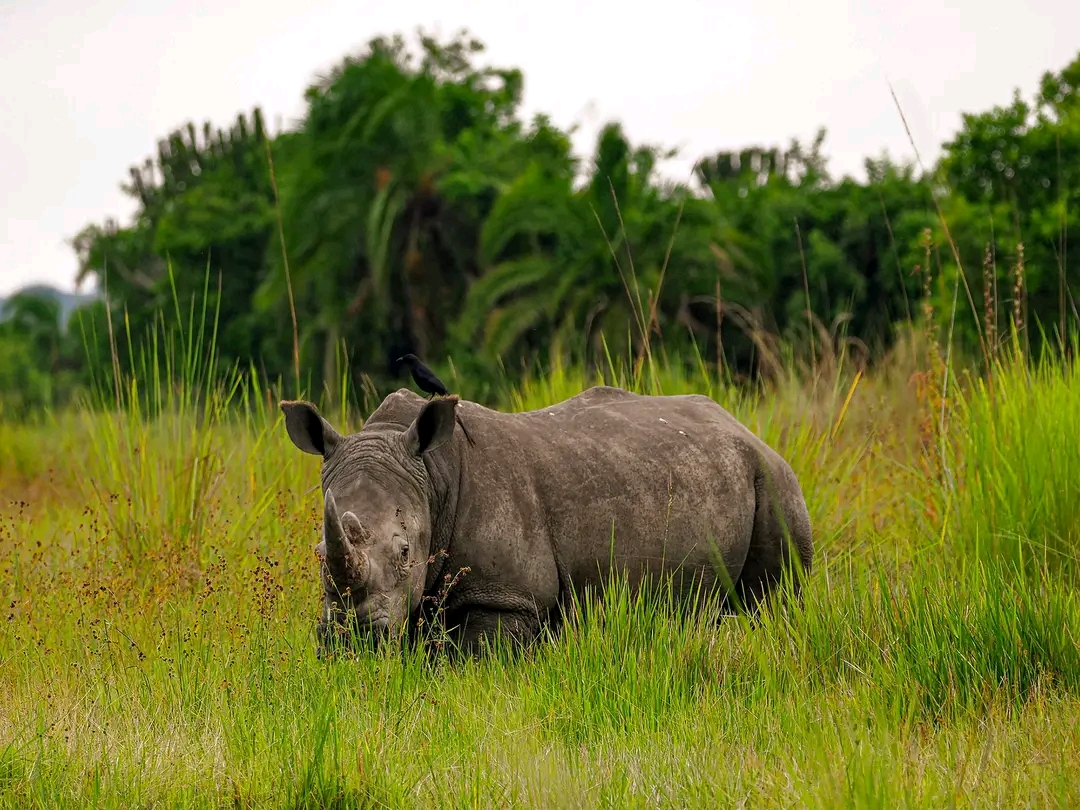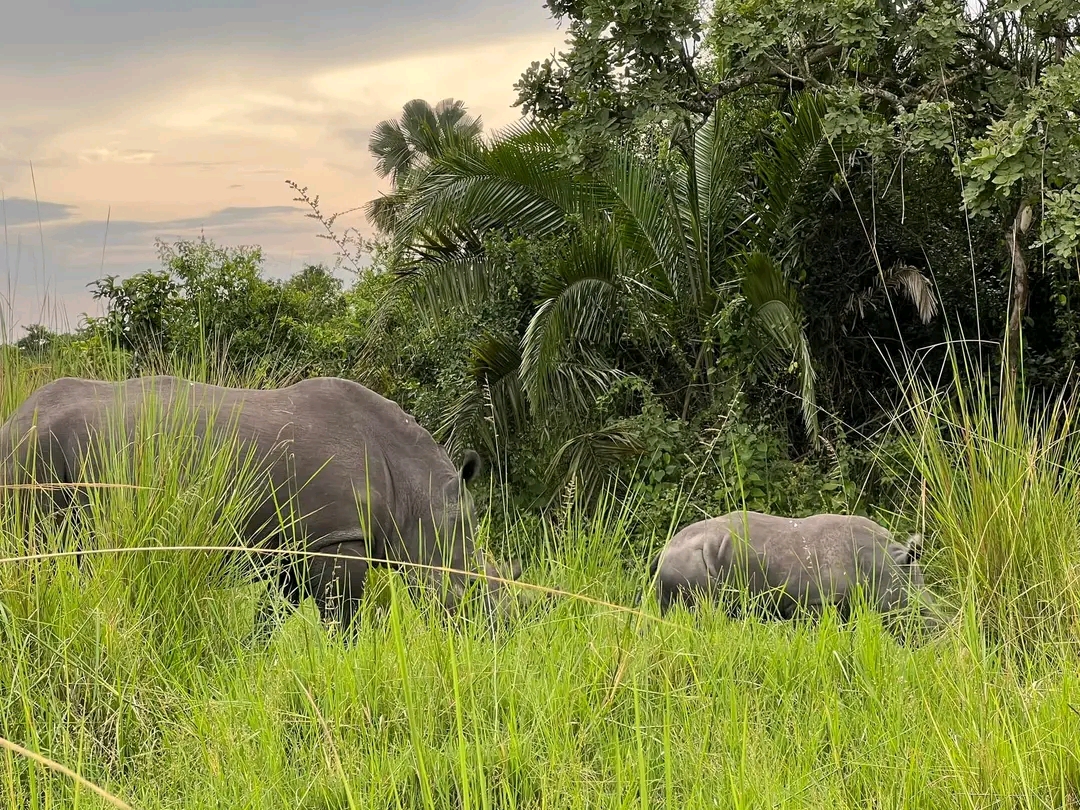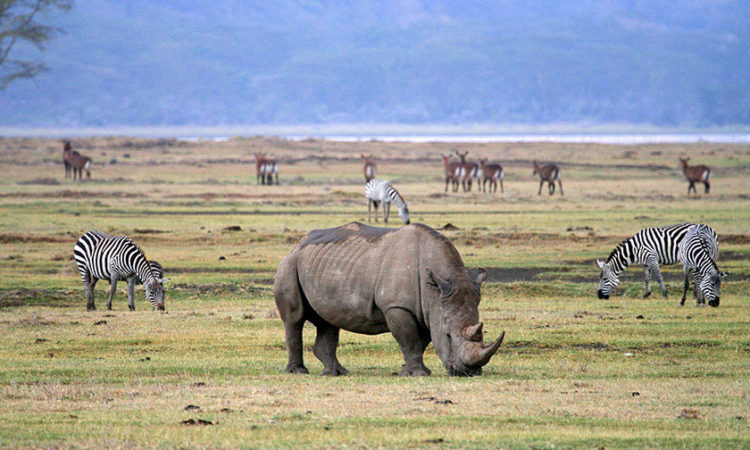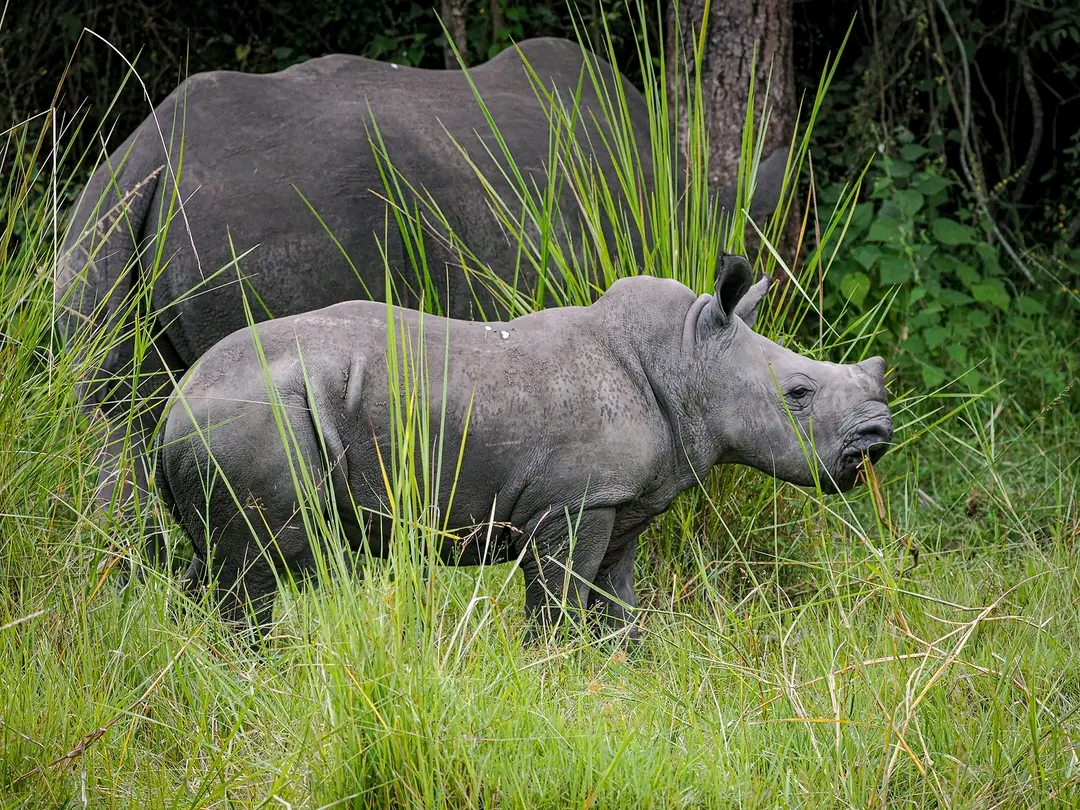The Rhinoceros, commonly referred to as rhinos, is a group of massive herbivorous mammals that have roamed the Earth for millions of years. With their prehistoric appearance and remarkable features, rhinos have captivated the human imagination and played a vital role in various ecosystems. As you read this blog, you will explore the different species of rhinos, their unique characteristics, their ecological significance, the challenges they face, and the conservation efforts aimed at protecting these magnificent creatures. Important to note, the Rhino is a member of the Big 5 African game animals.

Diversity of Rhinoceros Species
There are five existing species of rhinos, each inhabiting different regions of Africa and Asia:
- White Rhinoceros (Ceratotherium simum): The white rhino, which has two subspecies – the southern white rhino and the critically endangered northern white rhino – is the largest of all rhino species.
- Black Rhinoceros (Diceros bicornis): Known for its hooked upper lip, the black rhino is a solitary and aggressive species, mainly found in savannas and woodlands.
- Indian Rhinoceros (Rhinoceros unicornis): Native to the Indian subcontinent, this species has a thick, armor-like hide and a single horn, making it a distinct and iconic animal.
- Sumatran Rhinoceros (Dicerorhinus sumatrensis): The smallest and hairiest of all rhino species, the Sumatran rhino is critically endangered, with fewer than 80 individuals left in the wild.
- Javan Rhinoceros (Rhinoceros sondaicus): The Javan rhino is one of the rarest large mammals on Earth, with a population of only around 72 individuals.
Here are some of the places to see the rhinos:
Unique Characteristics of Rhinos
Rhinos possess several distinctive features that set them apart from other mammals:
- Horns: The most noticeable characteristic of rhinos is their large, elongated horns. These horns are made of keratin, the same protein found in human hair and nails, and play a significant role in mating rituals and defense.
- Skin: Rhino skin is thick, tough, and nearly armor-like, providing protection against predators and environmental hazards. It also serves as a cooling mechanism in hot climates by secreting a layer of sweat, which dries into a protective coating.
- Diet and Digestion: Rhinos are primarily herbivorous, feeding on grasses, leaves, fruits, and occasionally small branches. Their unique digestive system allows them to break down tough plant materials, such as cellulose. This is done through a series of fermentative processes in their large intestines.
Ecological Significance
Rhinos are essential components of their ecosystems, and their presence has far-reaching ecological effects:
- Seed Dispersal: As they browse on plants and fruits, rhinos contribute to seed dispersal. This helps to regenerate vegetation and maintain plant diversity in their habitats.
- Habitat Engineers: Rhinos’ feeding habits and wallowing activities create natural openings and watering holes. This benefits various other species in the ecosystem, including birds, insects, and other herbivores.
- Predators’ Influence: The presence of large herbivores like rhinos influences predator behavior, helping to maintain a balance in the predator-prey relationship within their habitats.

Conservation Challenges
Despite their ecological importance, rhinos face numerous challenges that threaten their existence:
- Poaching: The illegal trade in rhino horns remains one of the most significant threats to rhino populations. This is driven by demand in some Asian countries, where the horns are falsely believed to have medicinal properties and serve as status symbols.
- Habitat Loss: Human activities, such as deforestation, agriculture, and urbanization, have led to the destruction and fragmentation of rhino habitats.
- Climate Change. The impacts of climate change, including extreme weather and alterations in vegetation patterns, can disrupt rhino habitats and food availability.
Conservation Efforts
Conservation organizations, governments, as well as local communities are actively engaging in efforts to protect and preserve rhinos:
- Anti-Poaching Measures: Increased anti-poaching patrols, the use of technology such as drones and GPS tracking, as well as stricter law enforcement have been employed to combat illegal hunting.
- Habitat Protection: Establishing and maintaining protected areas, national parks, as well as wildlife reserves are critical for safeguarding rhino habitats.
- Community Involvement. Also engaging local communities in conservation efforts is vital to ensure support and cooperation in protecting rhino populations as well as their habitats.

Conclusion
The rhinoceros are remarkable animals, deeply interconnected with their ecosystems and playing crucial roles in the balance of nature. As we face the challenges of the 21st century, the preservation of these magnificent creatures requires global cooperation. On top of this, a commitment to combat illegal wildlife trade, as well as sustainable conservation strategies. By safeguarding the rhinos, we not only protect a unique species but also contribute to the preservation of the biodiversity. This also means we are contributing to ecological integrity of our planet for generations to come.








